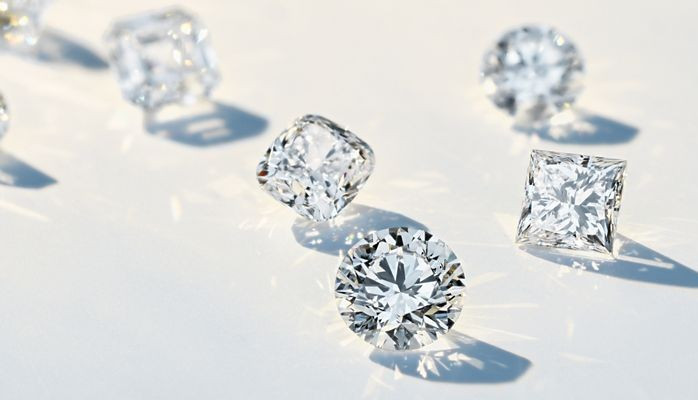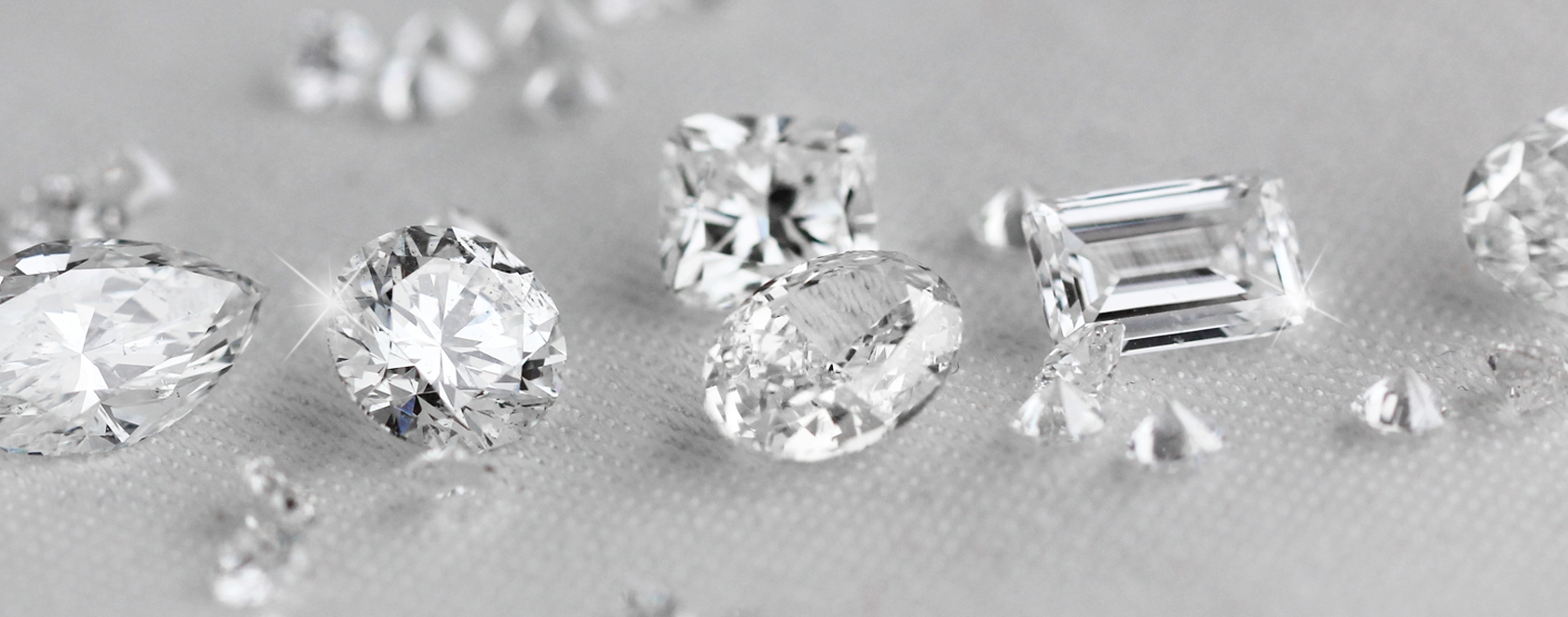
Diamond 4 C Chart: Deciphering the Code of Diamond Quality
March 5, 2024Diamonds are not merely shiny rocks; they are exquisite creations of nature, each possessing unique characteristics that determine its beauty and value. If you’ve ever been in the market for a diamond, you’ve likely come across the term “4 C’s.” But what exactly does it mean, and how can it help you choose the perfect diamond? Let’s embark on a journey to unravel the mysteries of the diamond 4 C chart.
Table of Contents
Introduction to Diamond 4 C Chart
Overview of Diamond Grading
Before diving into the intricacies of the 4 C’s, it’s essential to understand the concept of diamond grading. Grading diamonds involves evaluating their attributes to determine their quality and value. This process ensures consistency and transparency in the diamond industry, allowing consumers to make informed decisions.
Importance of the 4 C’s
The 4 C’s stand for Cut, Color, Clarity, and Carat Weight, representing the key characteristics that determine a diamond’s quality. These factors interact in complex ways, shaping the diamond’s appearance and brilliance.
What is a Diamond 4 C Chart?
A diamond 4 C chart is a graphical representation of a diamond’s characteristics based on the 4 C’s. It provides a visual guide that helps consumers understand and compare different diamonds, enabling them to make educated choices.
Understanding the 4 C’s
Cut
The cut of a diamond refers to its proportions, symmetry, and polish, which directly affect its brilliance and sparkle. A well-cut diamond reflects light internally, creating a mesmerizing display of fire and brilliance.
Color
Diamond color is graded on a scale from D (colorless) to Z (light yellow or brown). The absence of color is highly prized in diamonds, as it allows more light to pass through, enhancing their beauty.
Clarity
Clarity measures the presence of internal and external flaws, known as inclusions and blemishes, respectively. Diamonds with fewer imperfections are more valuable and desirable due to their rarity and clarity.
Carat Weight
Carat weight refers to the diamond’s size and weight, with one carat equal to 200 milligrams. While carat weight affects a diamond’s size, it’s essential to consider the other 3 C’s to determine its overall quality.
How to Read a Diamond 4 C Chart
Interpreting Cut Grades
Cut grades range from Excellent to Poor and determine how effectively a diamond reflects light. Opting for a higher cut grade ensures maximum brilliance and sparkle.
Deciphering Color Grades
Color grades range from D to Z, with D being the most desirable. Even subtle differences in color can significantly impact a diamond’s appearance and value.
Understanding Clarity Grades
Clarity grades range from Flawless to Included, indicating the presence of inclusions and blemishes. A higher clarity grade indicates a cleaner and more valuable diamond.
Analyzing Carat Weight
Carat weight is straightforward to understand, with larger diamonds generally commanding higher prices. However, it’s essential to consider the other 3 C’s to assess a diamond’s true worth.
Importance of Each C in Diamond Selection
Cut’s Impact on Sparkle and Brilliance
The cut is often considered the most crucial factor as it directly influences a diamond’s light performance. A well-cut diamond maximizes light reflection, creating a stunning visual display.
Color’s Role in Diamond Appearance
While colorless lab diamonds are traditionally preferred, the right color grade depends on personal preference and budget. Some individuals may prefer warmer tones, while others prioritize a bright, colorless appearance.
Clarity’s Influence on Diamond’s Flawlessness
Clarity is a testament to a diamond’s purity, with flawless diamonds being exceptionally rare and valuable. However, diamonds with slight imperfections may still appear flawless to the naked eye, offering excellent value for money.
Carat Weight and Size Considerations
Carat weight impacts a diamond’s size, but size alone does not determine its beauty. It’s essential to strike a balance between carat weight and the other 3 C’s to find the perfect diamond within your budget.
Choosing the Right Diamond Using the 4 C Chart
Setting Priorities Based on Personal Preferences
When selecting a diamond, consider which of the 4 C’s are most important to you. Whether you prioritize brilliance, size, or purity, understanding your preferences will guide your decision-making process.
Budget Considerations and Trade-offs
While everyone desires a flawless, colorless diamond of significant size, budget constraints may necessitate trade-offs. By prioritizing the 4 C’s based on your preferences and budget, you can find a diamond that offers the best value for money.
Tips for Maximizing Value with the 4 C Chart
Understanding Diamond Price Factors
Diamond prices are influenced by various factors, including the 4 C’s, market demand, and availability. Educate yourself on these factors to make informed decisions and maximize the value of your purchase.
Finding the Right Balance Between the 4 C’s
Rather than fixating on a single aspect, such as carat weight or clarity, strive to find the right balance between all 4 C’s. A well-balanced diamond will exhibit exceptional beauty and value, satisfying both aesthetic and budgetary requirements.
Common Mistakes to Avoid When Using the 4 C Chart
Focusing Solely on Carat Weight
While size matters, prioritizing carat weight over other factors can result in a less brilliant and visually appealing diamond. Consider the overall quality and balance of the diamond to ensure maximum beauty and value.
Ignoring the Importance of Cut Quality
Cut quality significantly impacts a diamond’s brilliance and sparkle. Choosing a poorly cut diamond may result in lackluster performance, regardless of its size or clarity grade.
Overlooking Clarity and Color Grades
While imperfections may be invisible to the naked eye, they can still affect a diamond’s overall beauty and value. Pay attention to clarity and color grades, as even slight differences can significantly impact a diamond’s appearance.
Using the 4 C Chart for Diamond Investment
Factors to Consider for Investment-Grade Diamonds
Investment-grade diamonds require careful consideration of the 4 C’s, along with additional factors such as rarity, provenance, and market trends. Seek expert advice and conduct thorough research before making investment decisions.
Potential ROI Based on the 4 C’s
While diamonds have historically been a symbol of wealth and status, their investment potential varies depending on several factors, including the 4 C’s. Consider long-term trends and market dynamics when assessing the potential return on investment.
Diamond 4 C Chart vs. Alternative Grading Systems
Contrasting with Other Diamond Grading Systems
While the 4 C’s are widely recognized and accepted, alternative grading systems exist, each with its own merits and limitations. Compare and contrast different grading systems to determine which best suits your needs and preferences.
Advantages of the 4 C Chart for Consumers
The 4 C chart provides consumers with a comprehensive framework for evaluating diamonds, empowering them to make informed decisions. Its simplicity and universality make it an invaluable tool for both novice buyers and seasoned investors.
Emerging Trends and Innovations in Diamond Grading
Technological Advancements in Diamond Analysis
Advances in technology, such as 3D scanning and artificial intelligence, are revolutionizing the diamond grading process. These innovations enable more accurate and objective assessments, enhancing consumer confidence and trust.
Evolving Standards in Diamond Grading
As consumer preferences and market dynamics evolve, so too do diamond grading standards. Regulatory bodies and industry organizations continually review and update grading criteria to reflect changing trends and developments.
Conclusion
In the intricate world of diamonds, the 4 C’s serve as a beacon of clarity, guiding consumers on their quest for the perfect gemstone. By understanding and leveraging the insights provided by the diamond 4 C chart, you can confidently navigate the complexities of diamond selection, ensuring that your investment shines bright for years to come.












